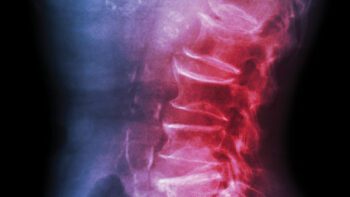
These are common questions asked by patients who are about to undergo corrective surgery for adult spinal deformity (ASD). There are several ways to answer these questions, and for the purpose of this commentary we will try to dissect these within the context of short- and long-term outcomes in ASD surgery. First, these are large, extensive, complicated, and long surgeries that have been consistently shown to be beneficial, but they do carry a high complication rate. Overall, approximately half (50%) of patients undergoing ASD surgery experience some sort of complication if you group all the minor and major complications together. This ranges from wound drainage and a urinary tract infection to heart attack, stroke, or even death. That isn’t the best odds! The good news is that complications which affect your outcome in the end are rare.
Outcome assessment after these surgeries has come a long way. Originally, the outcome was determined by the treating surgeon, which meant it was either good or really good (no bias here) and primarily related to what the x-rays looked like in the short term. In effort to develop a more meaningful assessment of how these surgeries or patients did, we transitioned to patient reported outcome measures (PROMs).1 These are derived from questionnaires answered by patients before and surgery (thanks to all of you who have completed these forms). This allows us to gauge the success of these surgeries from a patient perspective. They are not perfect, but definitely a step in the right direction, and they allow us to compare the impact ASD surgery has on health status, pain improvement, and function. In the future, we will likely transition to a more objective, functional assessment that is likely measured with smart implants or wearables that give us activity-related information.

The Short Term
In the short term, these surgeries can be tough to recover from. We now know that it is important to mobilize early, optimize modifiable co-morbidities, follow surgeons’ restrictions or limitations, and avoid falls. This seems intuitive but is essential to avoid catastrophic failure with vertebral fractures, loosening of implants and/or failure at the top of the screws and rods (proximal junctional failure/kyphosis). We have improved these surgeries or reduced these short-term complications with several efforts.
First, we have become much more selective about who is a good candidate for these surgeries. It is of the utmost importance that your surgeon does a comprehensive workup to evaluate your bone health, baseline function, nutrition, general health, and to optimize any coexisting comorbidities. Unfortunately, some patients are not good candidates for such extensive surgery and although it is tough to hear this, it is much better to avoid the surgery than have complications and end up with multiple surgeries with no improvement in the end (or even worse). Sometimes surgery may be an option, but we might suggest more time to get patients “tuned up” and optimized prior to scheduling the surgery.
Additionally, we have made a lot of progress on the anesthesia side of these long surgeries. It is important that these extensive surgeries are done by not only experienced surgeons but at centers that have the appropriate anesthesia team. This surgeon-anesthesia collaboration can be critical for minimizing blood loss, appropriate fluid management (helps avoid kidney and heart complications), pain control, and minimizing overly sedating medications that make early mobilization impossible.
Lastly, as for the prevention of proximal junctional problems, we are constantly innovating with our industry partners to develop creative ideas to minimize the risk of this occurrence. We now have a much larger toolbox to help prevent these types of problems from happening thanks to innovation collaboration.

The Long Term
Durability is the name of the game with long term outcomes. We strive to minimize the likelihood that patients need additional surgery. The two most common reasons patients return to the operating room are (1) pseudoarthrosis (the bones not healing together) or rod fracture, and (2) adjacent level degeneration (the level above/below surgery wears out). Over the years we have modified our surgical approach to help mitigate these from occurring by adding more construct strength in high stress areas, and although we are doing better, we still have room to improve. The good news is, even if these do occur and result in an additional surgery, typically these long-term complications have minimal impact on PROMs. Additionally, it’s worth noting that most patients are able to improve their function and get back to activities that they enjoy in life. There is a lot of variability among surgeons regarding when and if patients’ can return to specific activities, so it is very important to follow your surgeon’s instructions.2
Overall, reconstructive surgery for ASD is complex with a myriad of potential complications. Studies have consistently shown a benefit with surgery over nonoperative care in the appropriate, well-selected patient. Patients should have an open discussion with the surgeon regarding risks versus benefits and to assure all the questions have been addressed.3 It is recommended to seek care from highly specialized spinal deformity surgeons and centers that have the appropriate workup preoperatively, the appropriate anesthesia team, and the resources to deliver optimal outcomes in both the short- and long-term.
References:
1. Gum JL, Carreon LY, Glassman SD. State-of-the-art: outcome assessment in adult spinal deformity. Spine Deform. 2021;9(1). doi:10.1007/s43390-020-00220-3
2. Theologis AA, Cummins DD, Kato S, et al. Activity and sports resumption after long segment fusions to the pelvis for adult spinal deformity: survey results of AO Spine members. Spine Deform. Published online 2023. doi:10.1007/s43390-023-00734-6
3. Ogura Y, Gum JL, Soroceanu A, et al. Practical answers to frequently asked questions for shared decision-making in adult spinal deformity surgery. J Neurosurg Spine. 2021;34(2):218-227. doi:10.3171/2020.6. SPINE20363



